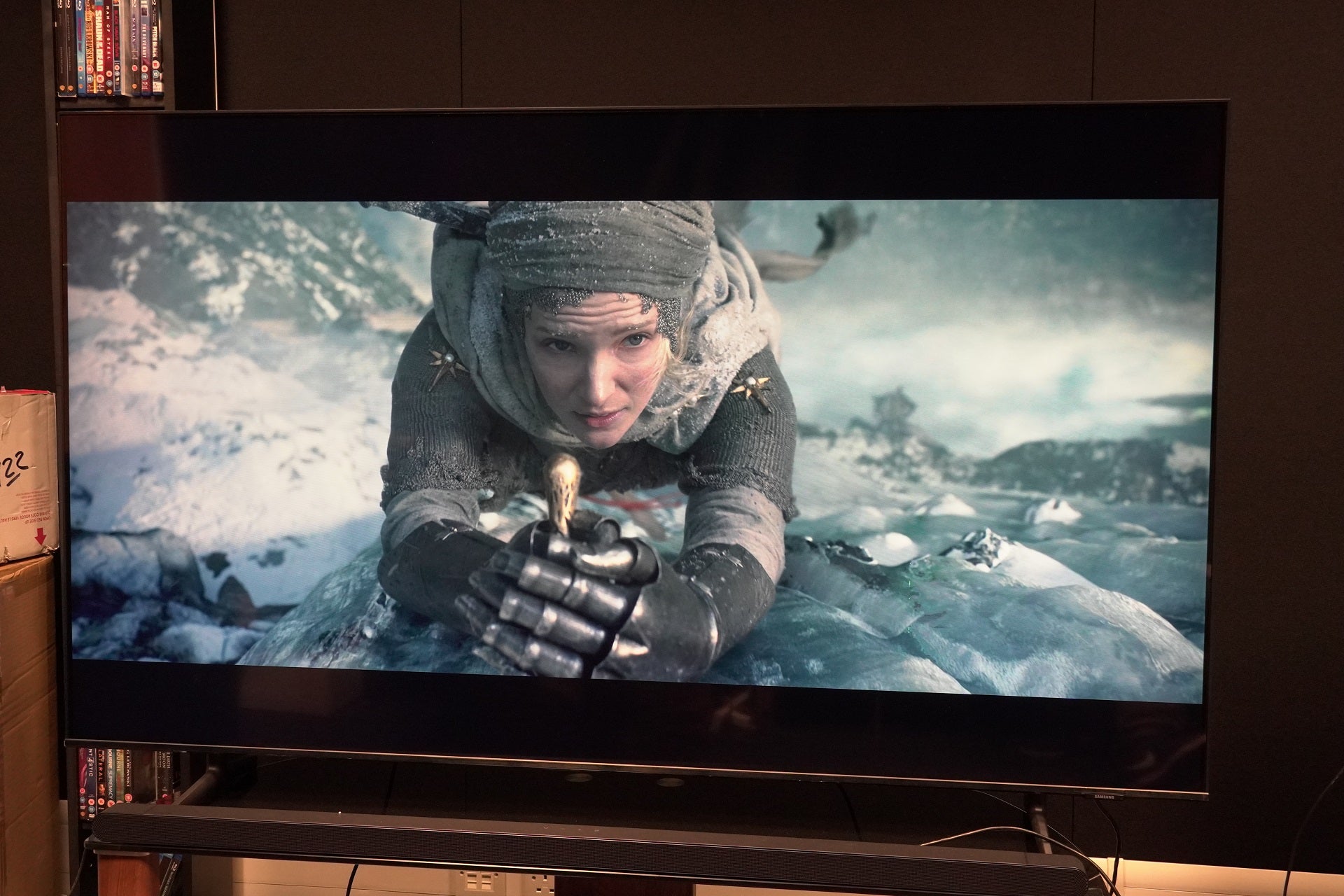On paper, this TV packs plenty of value, but the performance isn’t quite there. Slim design, lots of apps and decent features are highlights, but they’re counterbalanced by an underwhelming picture and sluggish interface.
Pros
- Slim, easy-to-assemble design
- Plenty of entertainment apps
- Affordable asking price for a 65-inch TV
Cons
- Sluggish interface
- Muted colour performance
- 2021 Samsung models are still available and cheaper
Availability
- UKRRP: £799
- USAunavailable
- EuropeTBC
- CanadaTBC
- AustraliaTBC
-
AirSlim designThin profile design for wall-mounting -
ProcessorCrystal Processor 4K for clearer picture, colourful images -
Q Symphony Lite + OTS LiteUse physical and virtual speakers to track sounds on screen
Introduction
Samsung’s QLED and QD-OLED TVs grab the limelight, but it’s the Korean brand’s most affordable TVs that shift in big numbers into the homes of customers around the world.
Now, we have the UE65BU8000, the step-down model from the BU8500 – both of which are new sets in Samsung’s affordable Crystal UHD range.
The key here is a combination of performance and value. So, has Samsung achieved the perfect balance with the BU8000?
Design
- Edge-lit screen
- Slender proportions
- Quick to assemble
- Reflective screen
Samsung’s obsession with slimness carries over to its Crystal UHD series, as the UE65BU8000 has a depth of 25.7mm. In comparison, LG’s supposedly slim 65-inch C2 OLED is 45.1mm at its thickest point.
The Samsung TV’s skinniness is aided by an Edge Lit screen, where an array of dimming LEDs that brighten and darken the screen are positioned around its edges. The BU8000 would seem a prime candidate for wall-mounting, but it mucks things up a bit with the placement of its connections.
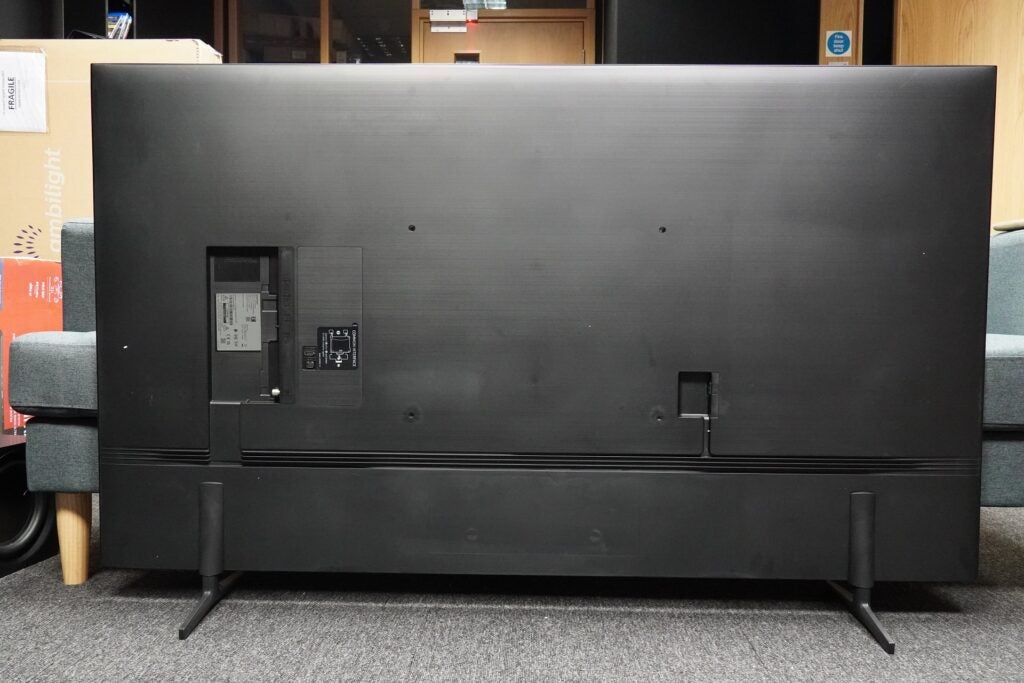
Most are side-facing – which helps with routing cables – but an HDMI port and digital optical out are rear-facing, so if you want to connect a third source, you may need one of those right-angled HDMI connectors.
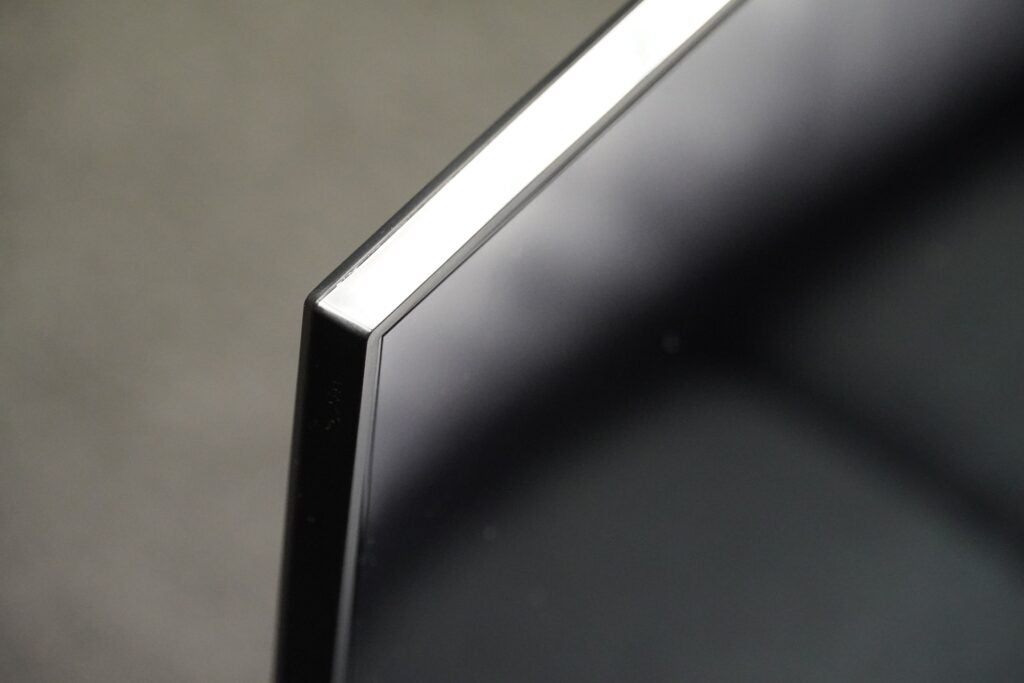
That aside, the BU8000 is another TV from Samsung that resolutely refuses to draw attention to itself with its thin bezel frame. The feet didn’t take me much time to attach, sliding and locking into place on the rear of the screen. But there’s no cable management, and the feet are situated towards the edges, so you’ll want to make sure you have a stand big enough to hold this 65-inch model.
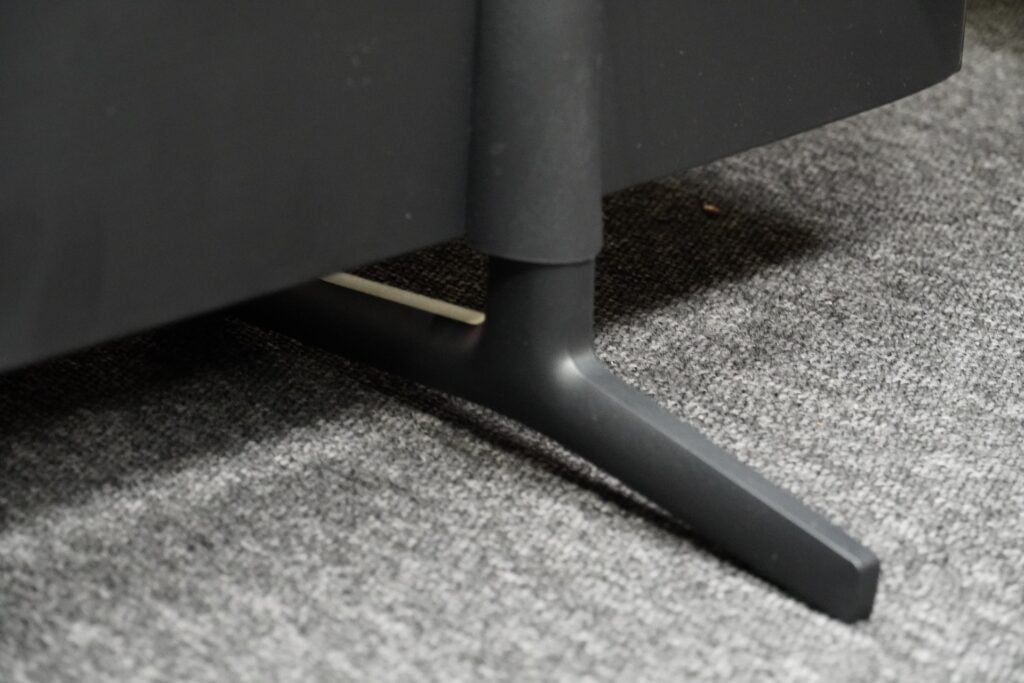
Performance at wide angles does fade quickly when off axis. At best, you’ll want to be at a slight angle before the colours start to fade. This TV is also not bright enough to withstand reflections, so you won’t want to cast much direct light on the screen.
Tizen Smart Hub Interface
- Slow interface
- Cloud gaming options
- Free TV Plus streaming service
I’ve grumbled about the sluggishness of Samsung’s refreshed interface for its 2022 TVs, but up until now, the issue has been an unresponsive smart remote. The UE65BU8000, on the other hand, is just slow all over.
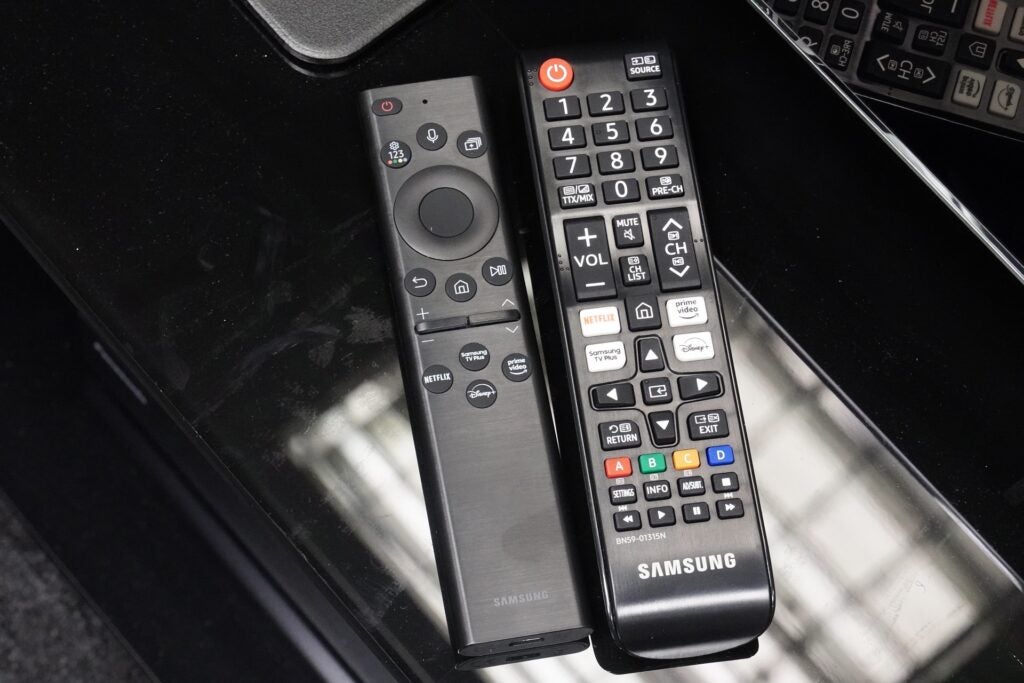
Regardless of the remote used (and this TV comes with both the smart and standard zappers), the interface’s leadenness makes navigation akin to walking in quicksand. Wherever the problem lies, the Tizen interface could certainly benefit from more optimisation.
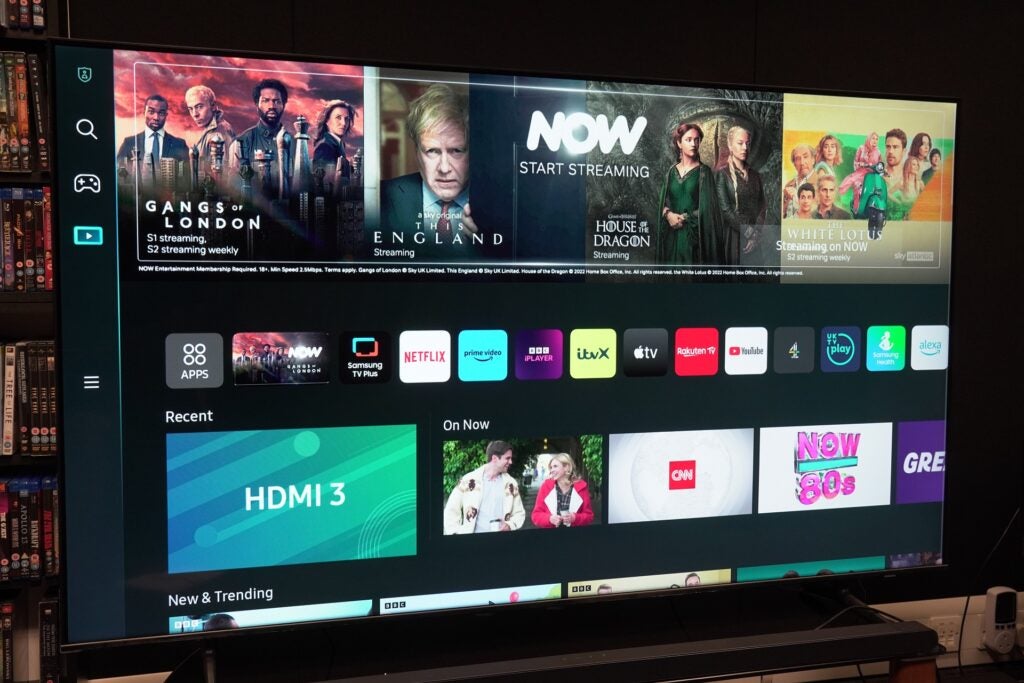
The new interface takes up the whole screen and is centred around curating content to watch, whether it’s the big banner advertisement at the top or the several rows of content to scroll through. Among these are rows of entertainment apps and recently used sources for jumping back into what you were previously watching.
The smart hub is divided into sections accessible on the left-hand side. The main hub is an entertainment one, while the Gaming Hub, Universal Guide (basically, search function) and Settings are the other three sections (the BU8000 doesn’t support the Ambient mode that shows images when the TV is in its “sleep” mode).
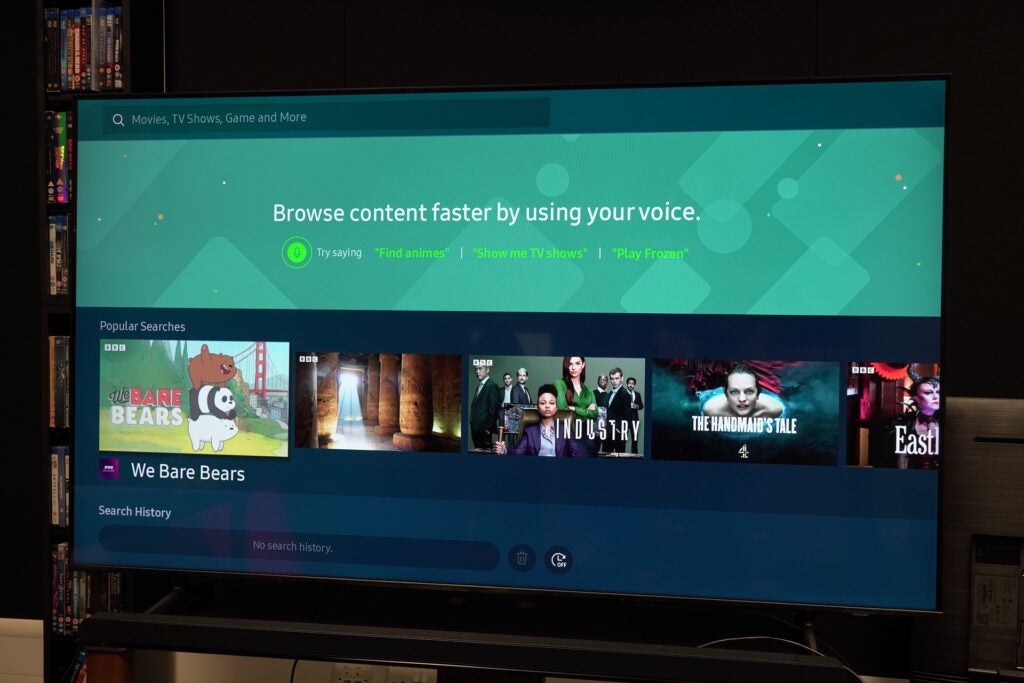
There are apps galore, with all the big names covered along with Samsung’s own apps (its Health app is front and centre). Despite no Freeview Play, Samsung offers the free streaming-based TV Plus service as an alternative, and all the UK catch-up apps are present.
In terms of gaming, this TV has cloud gaming options in Utomik, Nvidia GeForce Now, Luna (in the US) and Xbox Game Pass (an exclusive), with Antstream Arcade and Blacknut arriving in 2023.
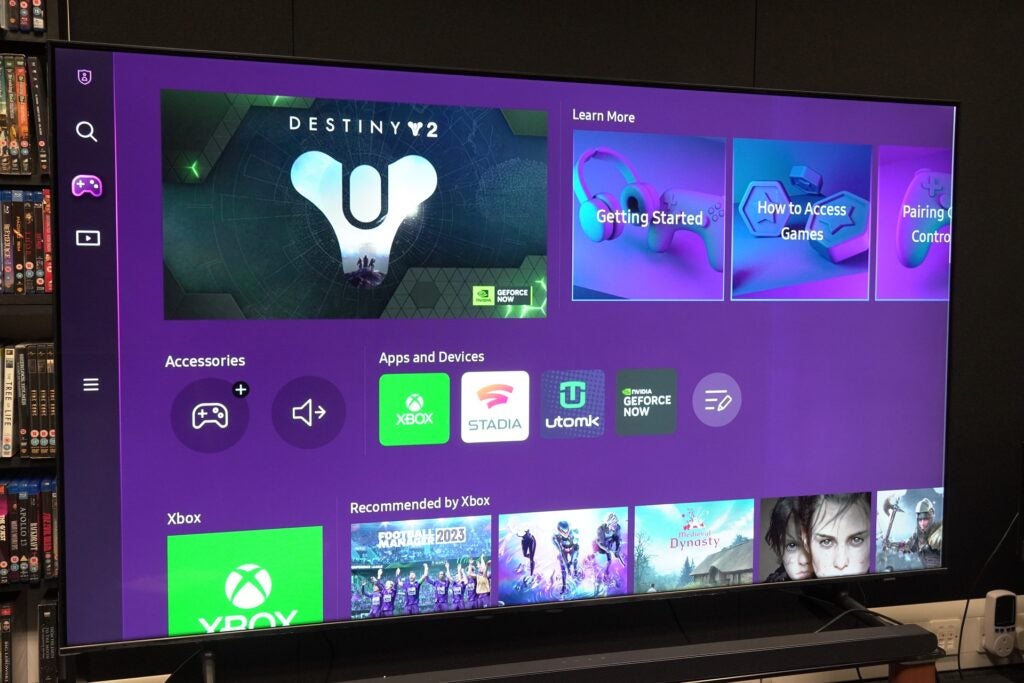
Features
- No VRR support
- Fast gaming performance
- Built-in voice assistance
Only three HDMI connections are provided, of which HDMI 2 is designated as the eARC port for sending soundtracks, such as Dolby Atmos, to a compatible soundbar. None of these is listed as bearing HDMI 2.1 support, which I’ll come back to shortly.
Other connection options include two USB ports, a CI slot, Ethernet, digital optical out and RF inputs for terrestrial and satellite connections. Wirelessly, there’s Bluetooth 5.2 and Wi-Fi.
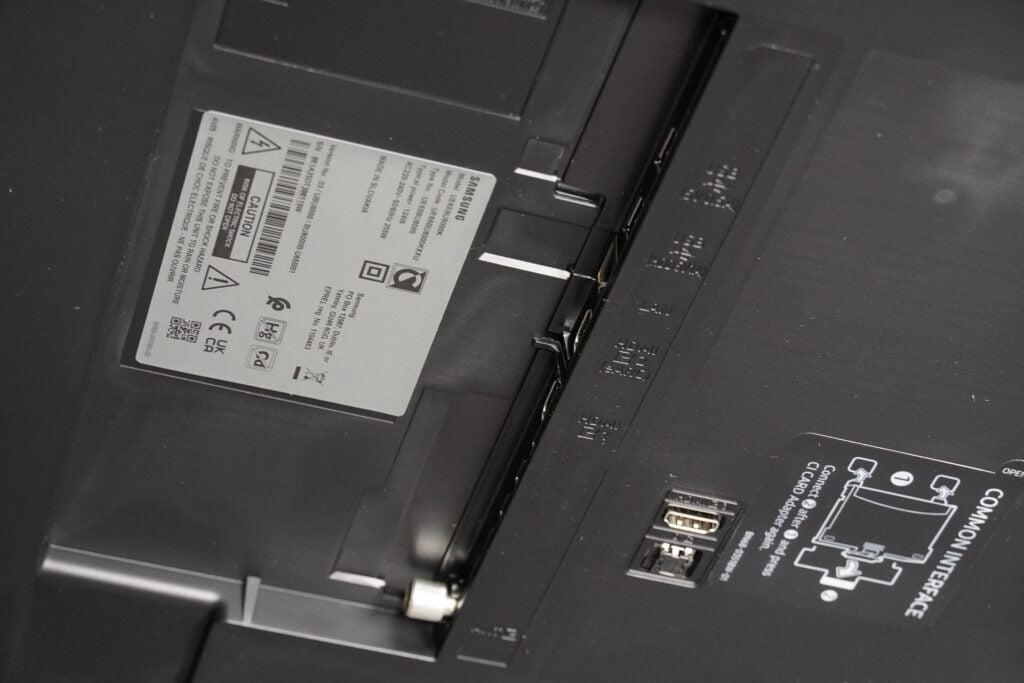
Going back to HDMI 2.1, there’s the auto low latency mode that automatically puts the TV into its most receptive state for gaming. That I measured at 9.5ms, which is a rapid performance for any TV. HGiG for a consistent HDR performance across games is also included.
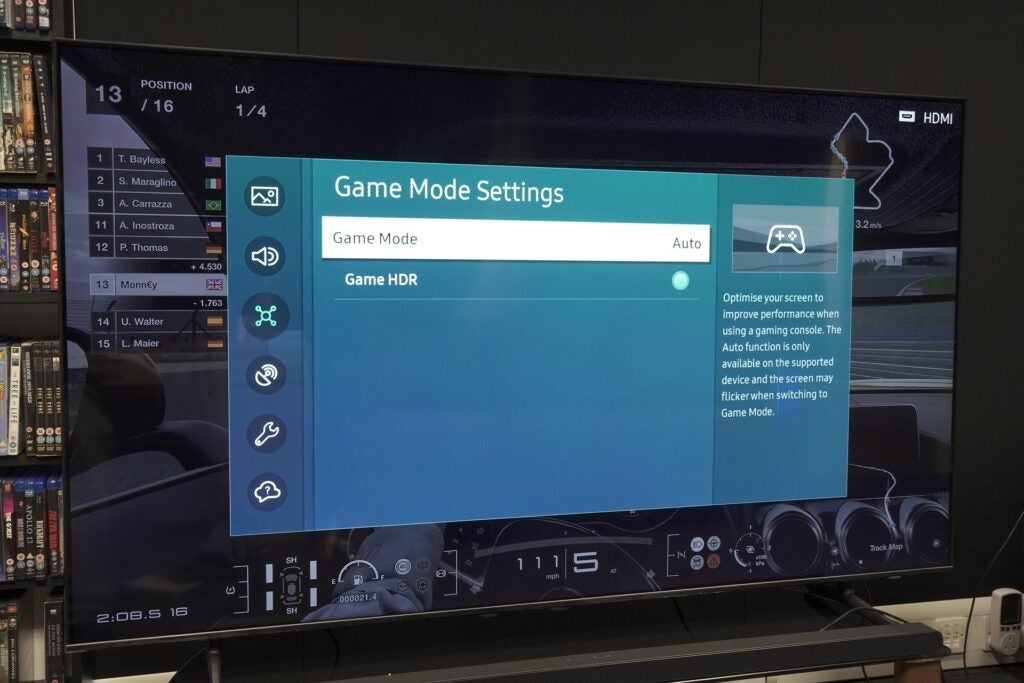
However, those looking for an affordable big screen for gaming should know that variable refresh rates (VRRs) aren’t supported (the BU8000 goes as far as 50Hz), which means you can’t get any lower than the 9.5ms latency I recorded. Nor does it support frame rates up to 120Hz, which is a feature that’s still rare below the £1,000 mark. Those who want a high-quality gaming experience won’t find it here, but casual gamers will get a fine-enough performance.
Enjoy talking to your TV? Bixby, Alexa (built-in) and Google Assistant are available to talk back and control other connected devices within the home.
Picture Quality
- Drab colours
- Stable-enough motion processing
- Lacks brightness
- Soft in terms of detail
Compare the UE65BU8000 with, say, Samsung’s QN90B Neo QLED and there’s an obvious and predictable gulf in quality. But the former is pitched to a more affordable market, and judged on its own merits, it offers a decent viewing experience. But its HDR performance left me wanting for a more expressive picture.
The Crystal processor 4K claims to offer “true to life colour”, but in my time with the set, its colours lacked punch and vigour. I measured brightness at a lowly 277 nits in Standard mode on a 5% HDR window (337 nits on a 10% window), with the Dynamic mode offering the best performance at 334 nits. That’s still short of the 500-600 nits needed to give HDR content some impetus.
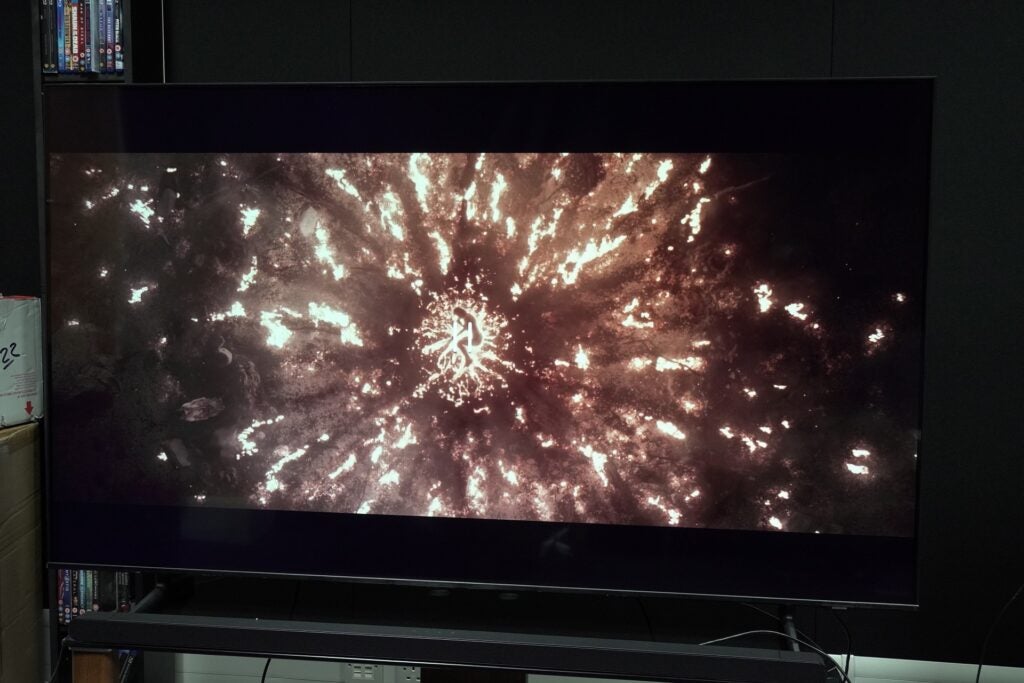
As a result, contrast is not the BU8000’s strongest suit, even with its VA panel, with black levels that lack depth and err towards grey tones. Meanwhile, the lack of overall brightness hampers the intensity of highlights and white tones. Switching to the TV’s Dynamic mode beefs up the contrast, but then the issue shifts to colour accuracy, chiefly in darker scenes where blacks take on a cooler, bluish tint.
That doesn’t make HDR content on this TV unwatchable, but I was aware of its limitations. The opening scene of Star Wars: Andor takes place at night, and I can just about make out shapes and objects in the gloom as Andor makes his way into a nightclub on Morlana One. The Shadow Detail setting offers a better glimpse into the darkness, but even a slight adjustment can affect the potency of the TV’s black levels. Adjusting the Contrast Enhancer can make a difference with slightly deeper blacks – but that’s a heavy emphasis on “slightly”.
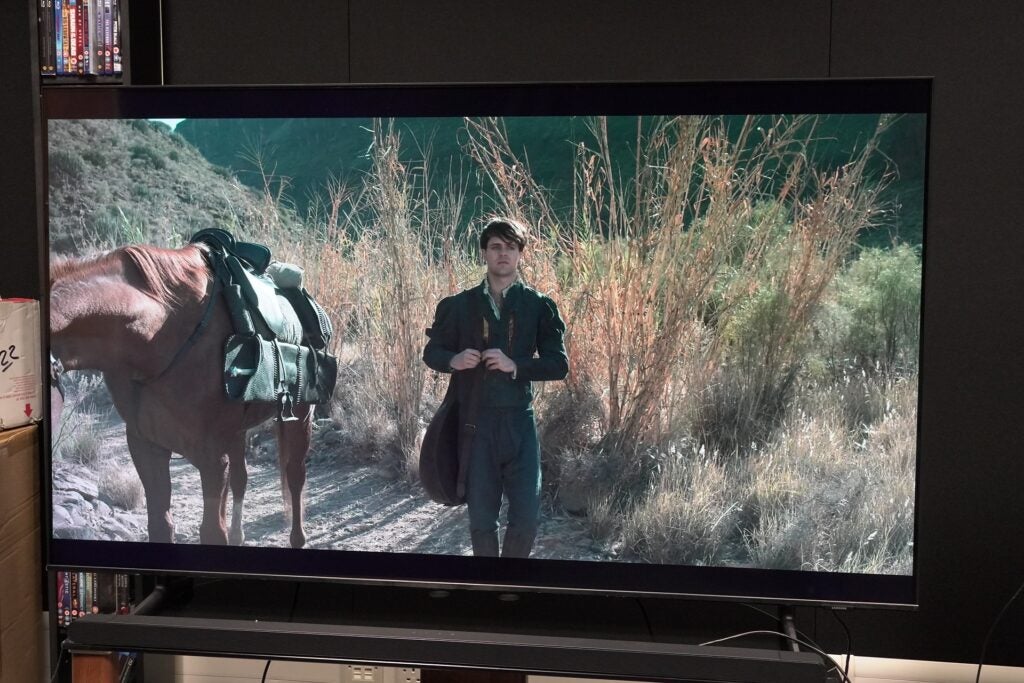
With brighter content set in daylight, the edge-lit screen fares better, but there is still a subdued manner in how it reproduces colours. As Geralt and Jaskier venture in the countryside in The Witcher, the greens of bushes and trees are rather underwhelming. Complexions are fine, but they lack punch and take on a paler tone (which is saying something for Geralt’s already pale skin), with his hair (of all things) looking a less-than-lustrous, dull shade of white. The BU8000 delivers a plain-looking image that doesn’t give a convincing impression of HDR.
HDR10+ assistance helps, but we’re talking subtle amounts here. In Bad Times at the El Royale and The Suicide Squad, colours have a little more depth and range, although the spectacular-looking The Rings of Power appears flat in places – there’s simply not enough contrast, depth or richness in the BU8000’s colours to convey a truly three-dimensional image.
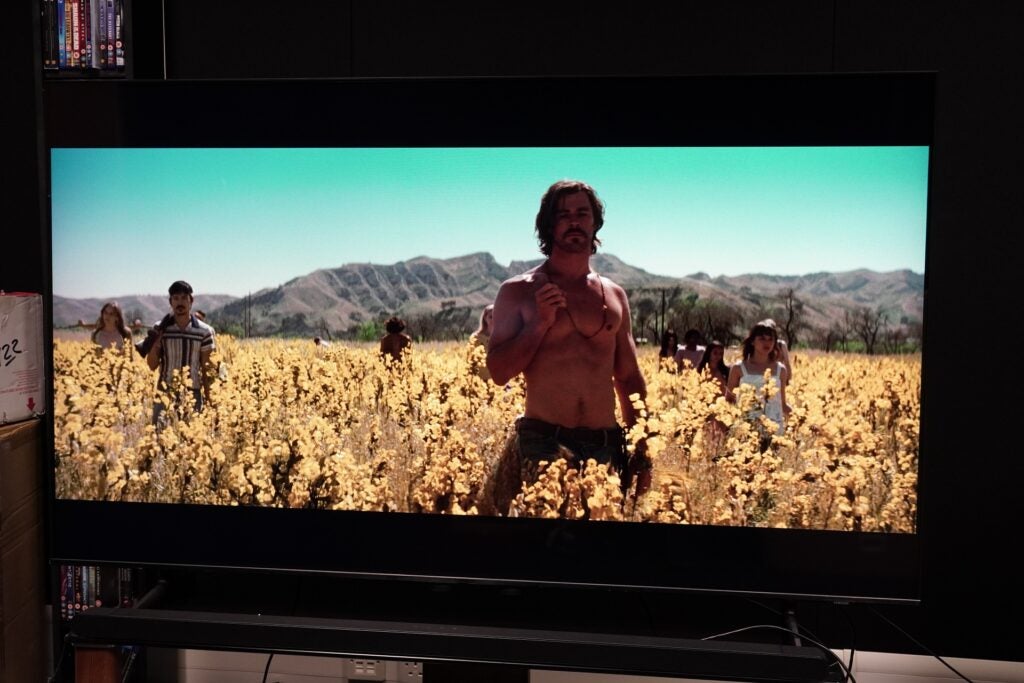
This TV’s sense of detail is not forensic, whether it’s peeking into bright or dark tones, and there’s a fuzziness in general: the leather texture and styling of Geralt’s suit in The Witcher seem hazy in their definition. There’s an overall softness that indicates the BU8000 doesn’t offer the sharpest-looking image.
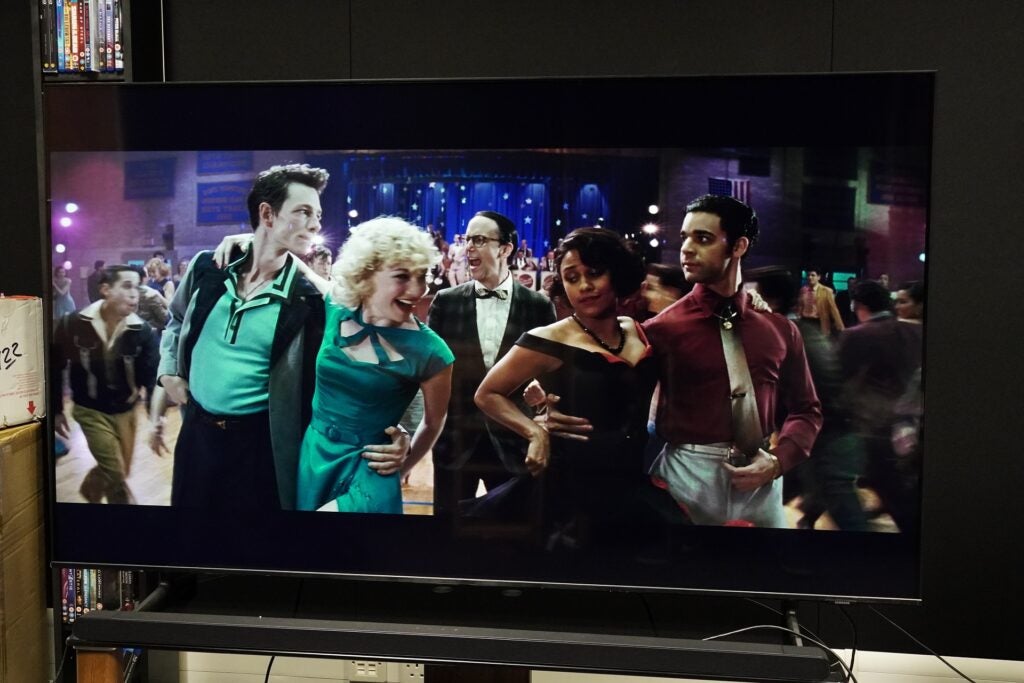
Its motion handling abilities are rather decent when watching West Side Story in 4K HDR. The Custom setting is good with no noticeable artefacts and judder, while the stronger Auto setting gives the dance scene at the school a glossier, more artificial look (usually around the mouths of people as they talk), with a hint of stutter and judder if you look closely.
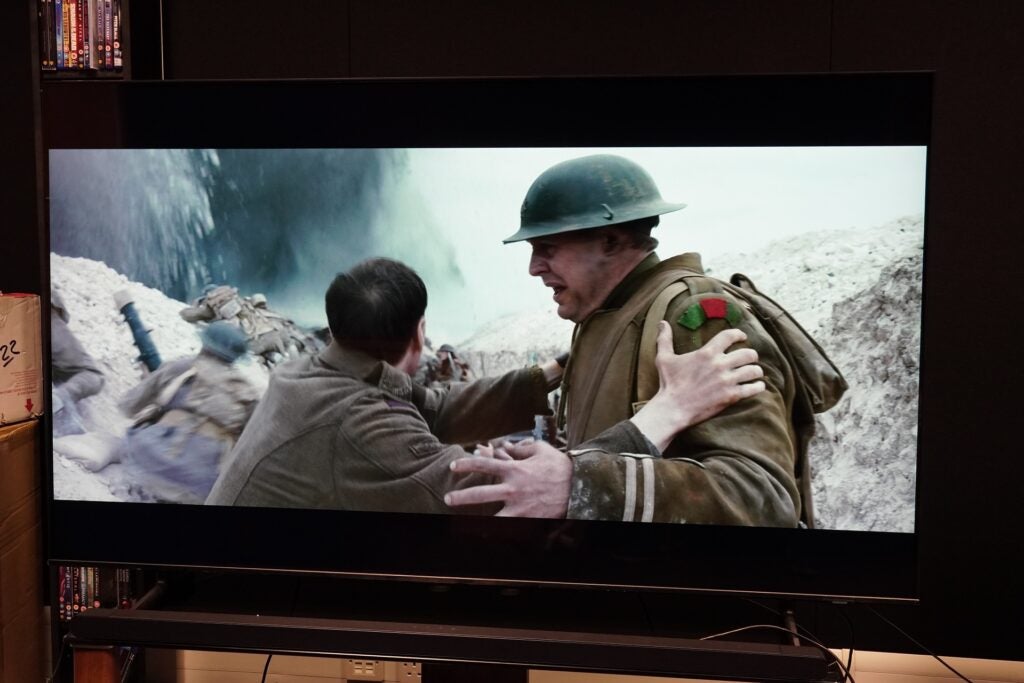
It keeps up with the pace and intricate movement of the dancers as they cross each other’s paths surprisingly well, but the penalty imposed is that sharpness and definition are further eroded. The same strengths and weaknesses pop up when watching 1917 (although artefacts are more noticeable with that film). Both movies look best without the Motion Plus setting on.
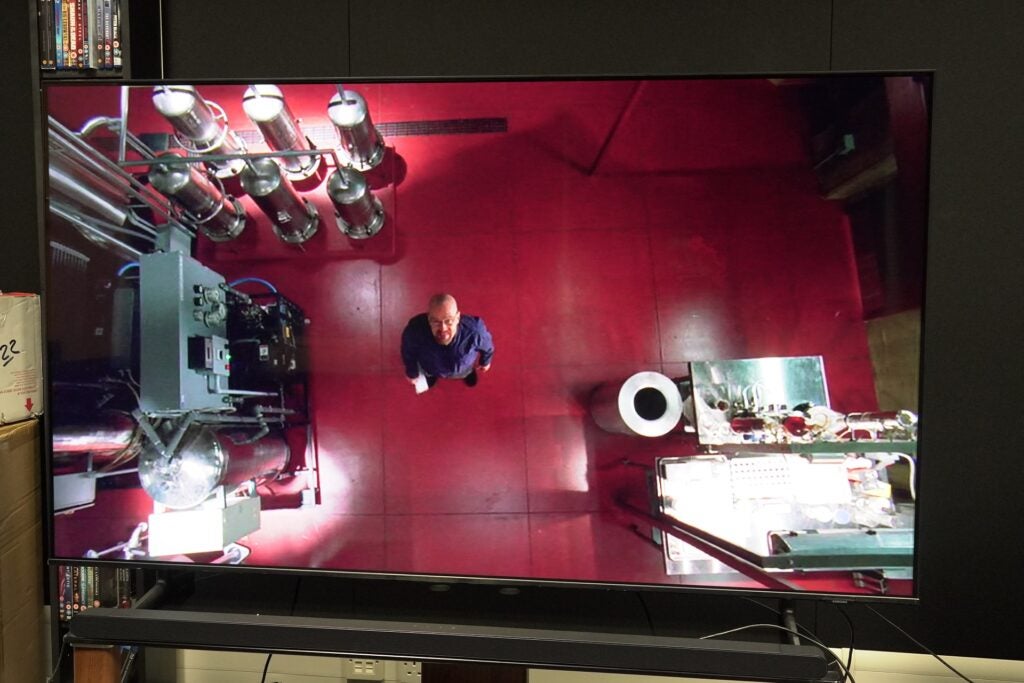
Focusing on the Crystal processor’s upscaling skills, an episode of Breaking Bad (Fly) on DVD has noise and soft edges, but it can pick out detail on characters’ faces fine enough, and it’s a colourful rendition too – the red of the superlab’s floor and the purple-green pattern of Walter’s chequered jacket stand out.
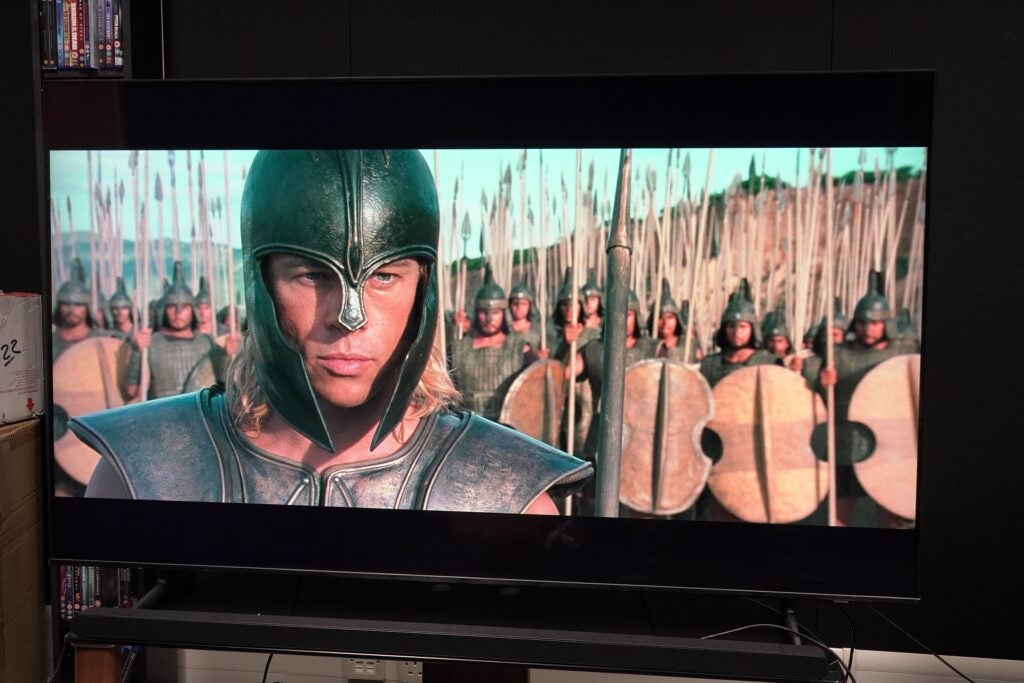
Troy on Blu-ray features an ample amount of detail found on characters’ faces and period armour, as well as a decent level of clarity for a 65-inch screen. The azure blues of the sky translate well and contrast with the sun-dappled yellow of the beach as the Greeks storm it. It’s a credible upscaling performance, with no distracting artefacts, and the BU8000’s sense of colour is best realised with SDR content. But, again, the image does appear a touch soft.
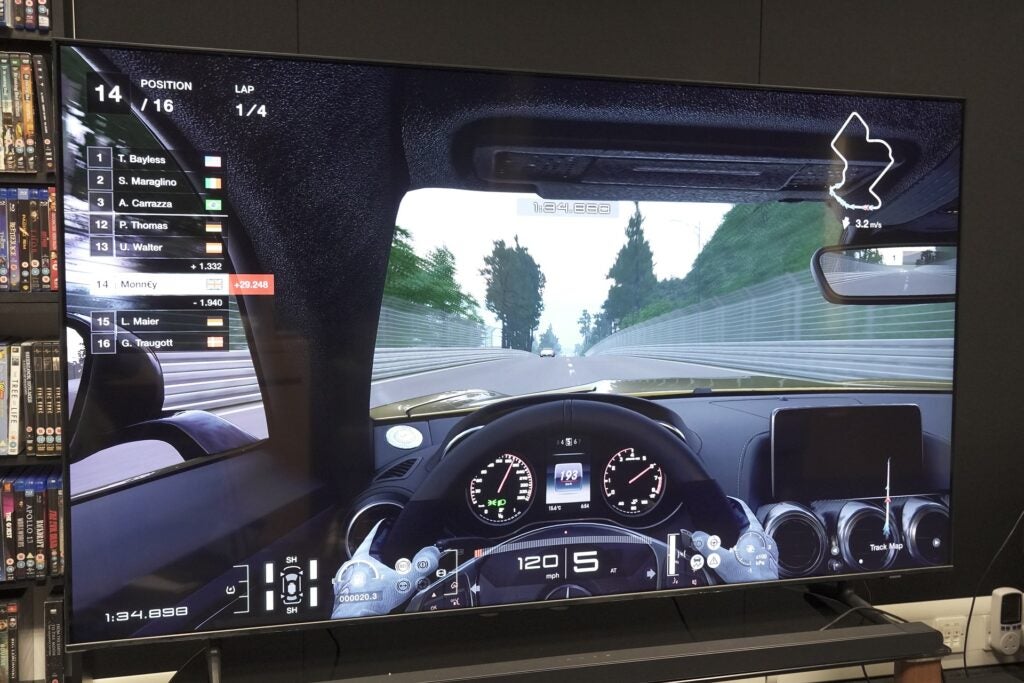
The Game mode is bright enough to give a little zing to the tints and reflections of cars in Gran Turismo 7, and the image is colourful enough, but a little more vibrancy would not go amiss.
I should also mention that the BU8000 came with a slight panel defect with a green strip running vertically down the screen that would appear every now again, mainly when streaming content.
Sound Quality
- No built-in Atmos
- OTS Lite system for placing sounds on screen
- Good with dialogue
Audio modes are a choice of Standard, Adaptive Sound and Amplify. Adaptive Sound is decent, but I found Amplify improved the loudness of the TV, although its impression of dynamism is on the weaker side.
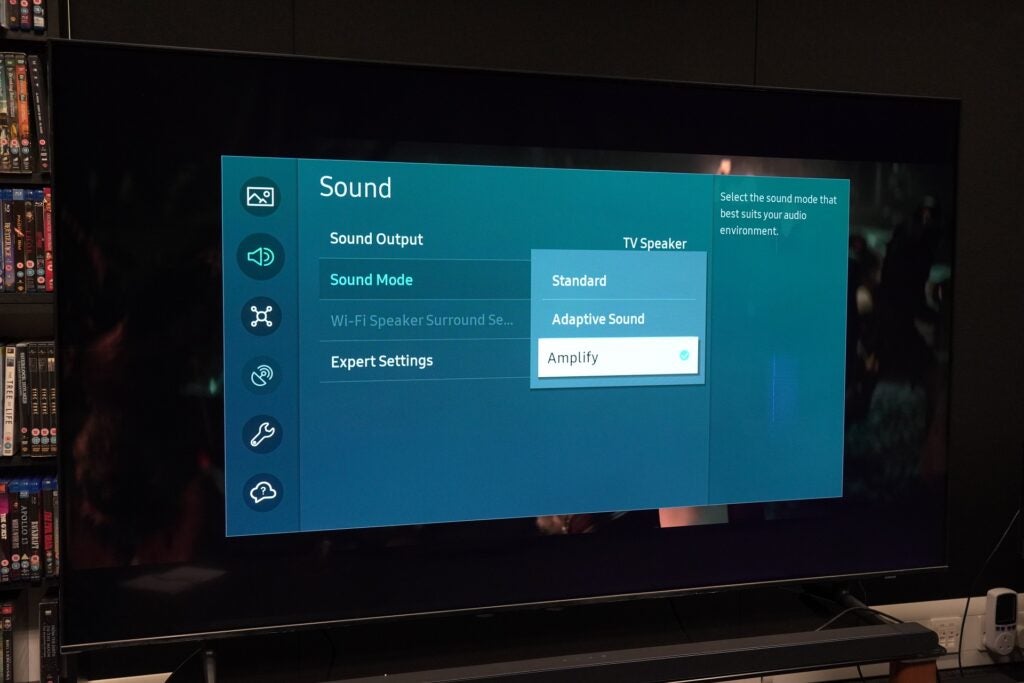
For a screen of this size, it doesn’t sound big, giving a sense of being hemmed in. That said, dialogue clarity is good and intelligible, and it has a decent grasp of detail: the creaks and groans of an abandoned village in The Rings of Power are nicely realised. The OTS Lite sound system does a decent job of placing the sounds on screen.
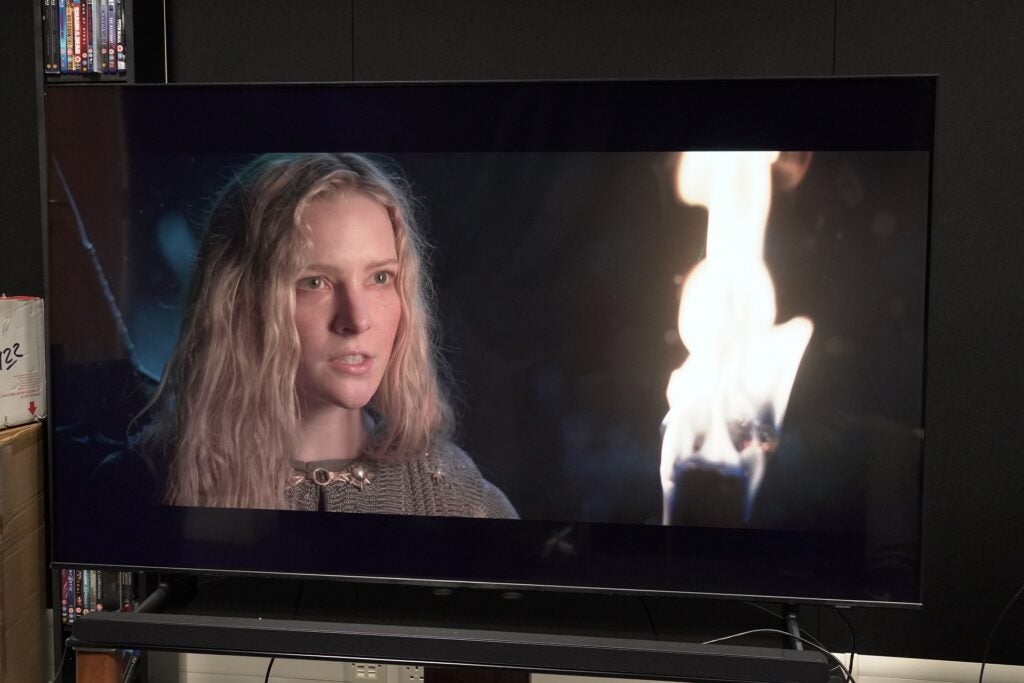
It can sound a little murky in describing low frequencies. The beats in rock music from Thor: Love and Thunder is flat, and in The Rings, the Elves encounter with a cave troll doesn’t have much impact or heft in Standard mode (Amplify is a bit better). Push the speakers hard, and they scrimp on detail as sounds meld into one formless soundstage. There’s no built-in Dolby Atmos support with this model.
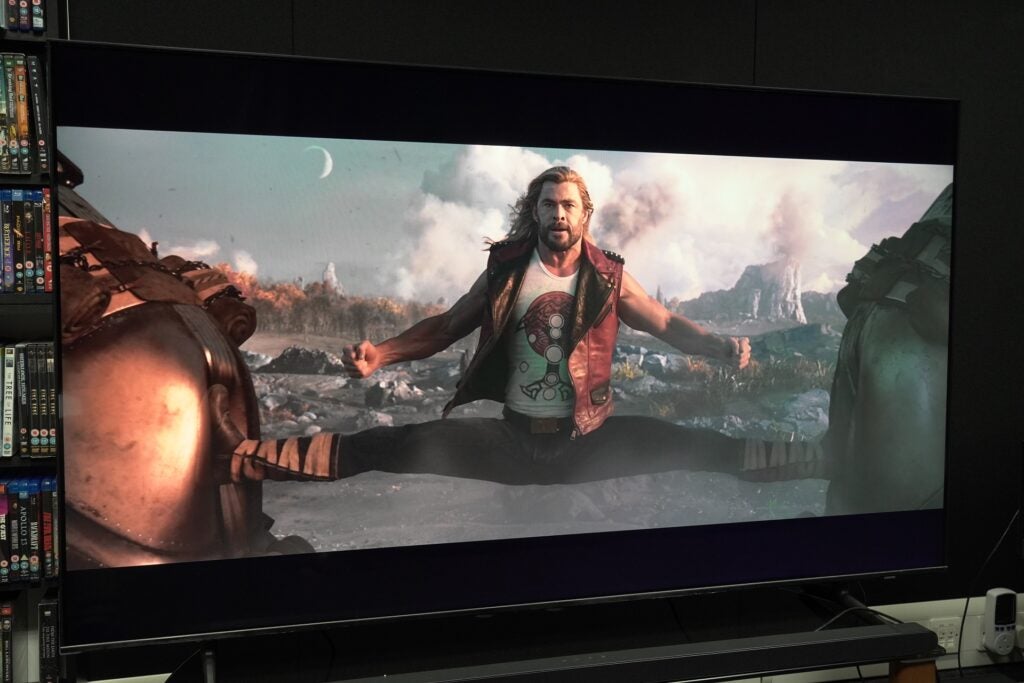
Those who have a Samsung soundbar with Q-Symphony can benefit from the BU8000’s Q-Symphony Lite feature that uses the TV and soundbar’s speakers in tandem to create a bigger sound. I tried it with the HW-S800B bar, and it did help place dialogue with more precision and a crisper tone, while the accompanying subwoofer took the load off the TV. You’ll certainly want to consider a soundbar, and Samsung’s range of soundbars match up well.
Latest Deals
Should you buy it?
If you want a reasonably priced 65-inch TV: In this market, £799 is an acceptable price for a 65-inch TV, and for casual viewers after a big-screen TV, the UE65BU8000 does have appeal on paper…
If you want better picture quality: What’s on paper doesn’t always translate into performance, and the lack of brightness harms the UE65BU8000’s images with a muted effort.
Final Thoughts
For those in need of an affordable big-screen TV, the Samsung UE65BU8000 seems to offer solid value on paper, but the performance just isn’t there. It struggles to deliver impactful HDR, its smart interface is sluggish, and although its gaming skills are fine, PS5 and Xbox Series owners won’t get the most optimal performance from this TV.
This is a decent effort for the price, but it falls short of the quality Samsung has achieved with models such as the AU9000. And as the latter is still available for less money than the BU8000, I’d pitch that TV as a better alternative.
How We Test
We test every television we review thoroughly over an extended period of time. We use industry standard tests to compare features properly. We’ll always tell you what we find. We never, ever, accept money to review a product.
Find out more about how we test in our ethics policy.
Tested with real world use
FAQs
The Samsung BU8000 was launched in 2022 and is available in the UK in sizes from 43-inches to 85-inches.
Jargon buster
LCD
The type of display usually used on cheaper and mid-range devices. Lacks the punch on an OLED panel.
Q-Symphony
Q-Symphony combines a TV and soundbar speakers to play sound at the same time. They work in concert to track objects across the screen and produce a bigger soundstage. This is only supported by specific Samsung soundbars and premium QLED TVs.
HDR10+
HDR10+ is a HDR format supported by Panasonic and Samsung as a free to use, open platform alternative to Dolby Vision. It adds dynamic metadata on top of the core HDR10 signal that tells a TV how it should adjust the brightness, colours and contrast of content for the most optimal picture quality.
On paper, this TV packs plenty of value, but the performance isn’t quite there. Slim design, lots of apps and decent features are highlights, but they’re counterbalanced by an underwhelming picture and sluggish interface.
Pros
- Slim, easy-to-assemble design
- Plenty of entertainment apps
- Affordable asking price for a 65-inch TV
Cons
- Sluggish interface
- Muted colour performance
- 2021 Samsung models are still available and cheaper
Availability
- UKRRP: £799
- USAunavailable
- EuropeTBC
- CanadaTBC
- AustraliaTBC
-
AirSlim designThin profile design for wall-mounting -
ProcessorCrystal Processor 4K for clearer picture, colourful images -
Q Symphony Lite + OTS LiteUse physical and virtual speakers to track sounds on screen
Introduction
Samsung’s QLED and QD-OLED TVs grab the limelight, but it’s the Korean brand’s most affordable TVs that shift in big numbers into the homes of customers around the world.
Now, we have the UE65BU8000, the step-down model from the BU8500 – both of which are new sets in Samsung’s affordable Crystal UHD range.
The key here is a combination of performance and value. So, has Samsung achieved the perfect balance with the BU8000?
Design
- Edge-lit screen
- Slender proportions
- Quick to assemble
- Reflective screen
Samsung’s obsession with slimness carries over to its Crystal UHD series, as the UE65BU8000 has a depth of 25.7mm. In comparison, LG’s supposedly slim 65-inch C2 OLED is 45.1mm at its thickest point.
The Samsung TV’s skinniness is aided by an Edge Lit screen, where an array of dimming LEDs that brighten and darken the screen are positioned around its edges. The BU8000 would seem a prime candidate for wall-mounting, but it mucks things up a bit with the placement of its connections.

Most are side-facing – which helps with routing cables – but an HDMI port and digital optical out are rear-facing, so if you want to connect a third source, you may need one of those right-angled HDMI connectors.

That aside, the BU8000 is another TV from Samsung that resolutely refuses to draw attention to itself with its thin bezel frame. The feet didn’t take me much time to attach, sliding and locking into place on the rear of the screen. But there’s no cable management, and the feet are situated towards the edges, so you’ll want to make sure you have a stand big enough to hold this 65-inch model.

Performance at wide angles does fade quickly when off axis. At best, you’ll want to be at a slight angle before the colours start to fade. This TV is also not bright enough to withstand reflections, so you won’t want to cast much direct light on the screen.
Tizen Smart Hub Interface
- Slow interface
- Cloud gaming options
- Free TV Plus streaming service
I’ve grumbled about the sluggishness of Samsung’s refreshed interface for its 2022 TVs, but up until now, the issue has been an unresponsive smart remote. The UE65BU8000, on the other hand, is just slow all over.

Regardless of the remote used (and this TV comes with both the smart and standard zappers), the interface’s leadenness makes navigation akin to walking in quicksand. Wherever the problem lies, the Tizen interface could certainly benefit from more optimisation.

The new interface takes up the whole screen and is centred around curating content to watch, whether it’s the big banner advertisement at the top or the several rows of content to scroll through. Among these are rows of entertainment apps and recently used sources for jumping back into what you were previously watching.
The smart hub is divided into sections accessible on the left-hand side. The main hub is an entertainment one, while the Gaming Hub, Universal Guide (basically, search function) and Settings are the other three sections (the BU8000 doesn’t support the Ambient mode that shows images when the TV is in its “sleep” mode).

There are apps galore, with all the big names covered along with Samsung’s own apps (its Health app is front and centre). Despite no Freeview Play, Samsung offers the free streaming-based TV Plus service as an alternative, and all the UK catch-up apps are present.
In terms of gaming, this TV has cloud gaming options in Utomik, Nvidia GeForce Now, Luna (in the US) and Xbox Game Pass (an exclusive), with Antstream Arcade and Blacknut arriving in 2023.

Features
- No VRR support
- Fast gaming performance
- Built-in voice assistance
Only three HDMI connections are provided, of which HDMI 2 is designated as the eARC port for sending soundtracks, such as Dolby Atmos, to a compatible soundbar. None of these is listed as bearing HDMI 2.1 support, which I’ll come back to shortly.
Other connection options include two USB ports, a CI slot, Ethernet, digital optical out and RF inputs for terrestrial and satellite connections. Wirelessly, there’s Bluetooth 5.2 and Wi-Fi.

Going back to HDMI 2.1, there’s the auto low latency mode that automatically puts the TV into its most receptive state for gaming. That I measured at 9.5ms, which is a rapid performance for any TV. HGiG for a consistent HDR performance across games is also included.

However, those looking for an affordable big screen for gaming should know that variable refresh rates (VRRs) aren’t supported (the BU8000 goes as far as 50Hz), which means you can’t get any lower than the 9.5ms latency I recorded. Nor does it support frame rates up to 120Hz, which is a feature that’s still rare below the £1,000 mark. Those who want a high-quality gaming experience won’t find it here, but casual gamers will get a fine-enough performance.
Enjoy talking to your TV? Bixby, Alexa (built-in) and Google Assistant are available to talk back and control other connected devices within the home.
Picture Quality
- Drab colours
- Stable-enough motion processing
- Lacks brightness
- Soft in terms of detail
Compare the UE65BU8000 with, say, Samsung’s QN90B Neo QLED and there’s an obvious and predictable gulf in quality. But the former is pitched to a more affordable market, and judged on its own merits, it offers a decent viewing experience. But its HDR performance left me wanting for a more expressive picture.
The Crystal processor 4K claims to offer “true to life colour”, but in my time with the set, its colours lacked punch and vigour. I measured brightness at a lowly 277 nits in Standard mode on a 5% HDR window (337 nits on a 10% window), with the Dynamic mode offering the best performance at 334 nits. That’s still short of the 500-600 nits needed to give HDR content some impetus.

As a result, contrast is not the BU8000’s strongest suit, even with its VA panel, with black levels that lack depth and err towards grey tones. Meanwhile, the lack of overall brightness hampers the intensity of highlights and white tones. Switching to the TV’s Dynamic mode beefs up the contrast, but then the issue shifts to colour accuracy, chiefly in darker scenes where blacks take on a cooler, bluish tint.
That doesn’t make HDR content on this TV unwatchable, but I was aware of its limitations. The opening scene of Star Wars: Andor takes place at night, and I can just about make out shapes and objects in the gloom as Andor makes his way into a nightclub on Morlana One. The Shadow Detail setting offers a better glimpse into the darkness, but even a slight adjustment can affect the potency of the TV’s black levels. Adjusting the Contrast Enhancer can make a difference with slightly deeper blacks – but that’s a heavy emphasis on “slightly”.

With brighter content set in daylight, the edge-lit screen fares better, but there is still a subdued manner in how it reproduces colours. As Geralt and Jaskier venture in the countryside in The Witcher, the greens of bushes and trees are rather underwhelming. Complexions are fine, but they lack punch and take on a paler tone (which is saying something for Geralt’s already pale skin), with his hair (of all things) looking a less-than-lustrous, dull shade of white. The BU8000 delivers a plain-looking image that doesn’t give a convincing impression of HDR.
HDR10+ assistance helps, but we’re talking subtle amounts here. In Bad Times at the El Royale and The Suicide Squad, colours have a little more depth and range, although the spectacular-looking The Rings of Power appears flat in places – there’s simply not enough contrast, depth or richness in the BU8000’s colours to convey a truly three-dimensional image.

This TV’s sense of detail is not forensic, whether it’s peeking into bright or dark tones, and there’s a fuzziness in general: the leather texture and styling of Geralt’s suit in The Witcher seem hazy in their definition. There’s an overall softness that indicates the BU8000 doesn’t offer the sharpest-looking image.

Its motion handling abilities are rather decent when watching West Side Story in 4K HDR. The Custom setting is good with no noticeable artefacts and judder, while the stronger Auto setting gives the dance scene at the school a glossier, more artificial look (usually around the mouths of people as they talk), with a hint of stutter and judder if you look closely.

It keeps up with the pace and intricate movement of the dancers as they cross each other’s paths surprisingly well, but the penalty imposed is that sharpness and definition are further eroded. The same strengths and weaknesses pop up when watching 1917 (although artefacts are more noticeable with that film). Both movies look best without the Motion Plus setting on.

Focusing on the Crystal processor’s upscaling skills, an episode of Breaking Bad (Fly) on DVD has noise and soft edges, but it can pick out detail on characters’ faces fine enough, and it’s a colourful rendition too – the red of the superlab’s floor and the purple-green pattern of Walter’s chequered jacket stand out.

Troy on Blu-ray features an ample amount of detail found on characters’ faces and period armour, as well as a decent level of clarity for a 65-inch screen. The azure blues of the sky translate well and contrast with the sun-dappled yellow of the beach as the Greeks storm it. It’s a credible upscaling performance, with no distracting artefacts, and the BU8000’s sense of colour is best realised with SDR content. But, again, the image does appear a touch soft.

The Game mode is bright enough to give a little zing to the tints and reflections of cars in Gran Turismo 7, and the image is colourful enough, but a little more vibrancy would not go amiss.
I should also mention that the BU8000 came with a slight panel defect with a green strip running vertically down the screen that would appear every now again, mainly when streaming content.
Sound Quality
- No built-in Atmos
- OTS Lite system for placing sounds on screen
- Good with dialogue
Audio modes are a choice of Standard, Adaptive Sound and Amplify. Adaptive Sound is decent, but I found Amplify improved the loudness of the TV, although its impression of dynamism is on the weaker side.

For a screen of this size, it doesn’t sound big, giving a sense of being hemmed in. That said, dialogue clarity is good and intelligible, and it has a decent grasp of detail: the creaks and groans of an abandoned village in The Rings of Power are nicely realised. The OTS Lite sound system does a decent job of placing the sounds on screen.

It can sound a little murky in describing low frequencies. The beats in rock music from Thor: Love and Thunder is flat, and in The Rings, the Elves encounter with a cave troll doesn’t have much impact or heft in Standard mode (Amplify is a bit better). Push the speakers hard, and they scrimp on detail as sounds meld into one formless soundstage. There’s no built-in Dolby Atmos support with this model.

Those who have a Samsung soundbar with Q-Symphony can benefit from the BU8000’s Q-Symphony Lite feature that uses the TV and soundbar’s speakers in tandem to create a bigger sound. I tried it with the HW-S800B bar, and it did help place dialogue with more precision and a crisper tone, while the accompanying subwoofer took the load off the TV. You’ll certainly want to consider a soundbar, and Samsung’s range of soundbars match up well.
Latest Deals
Should you buy it?
If you want a reasonably priced 65-inch TV: In this market, £799 is an acceptable price for a 65-inch TV, and for casual viewers after a big-screen TV, the UE65BU8000 does have appeal on paper…
If you want better picture quality: What’s on paper doesn’t always translate into performance, and the lack of brightness harms the UE65BU8000’s images with a muted effort.
Final Thoughts
For those in need of an affordable big-screen TV, the Samsung UE65BU8000 seems to offer solid value on paper, but the performance just isn’t there. It struggles to deliver impactful HDR, its smart interface is sluggish, and although its gaming skills are fine, PS5 and Xbox Series owners won’t get the most optimal performance from this TV.
This is a decent effort for the price, but it falls short of the quality Samsung has achieved with models such as the AU9000. And as the latter is still available for less money than the BU8000, I’d pitch that TV as a better alternative.
How We Test
We test every television we review thoroughly over an extended period of time. We use industry standard tests to compare features properly. We’ll always tell you what we find. We never, ever, accept money to review a product.
Find out more about how we test in our ethics policy.
Tested with real world use
FAQs
The Samsung BU8000 was launched in 2022 and is available in the UK in sizes from 43-inches to 85-inches.
Jargon buster
LCD
The type of display usually used on cheaper and mid-range devices. Lacks the punch on an OLED panel.
Q-Symphony
Q-Symphony combines a TV and soundbar speakers to play sound at the same time. They work in concert to track objects across the screen and produce a bigger soundstage. This is only supported by specific Samsung soundbars and premium QLED TVs.
HDR10+
HDR10+ is a HDR format supported by Panasonic and Samsung as a free to use, open platform alternative to Dolby Vision. It adds dynamic metadata on top of the core HDR10 signal that tells a TV how it should adjust the brightness, colours and contrast of content for the most optimal picture quality.


















